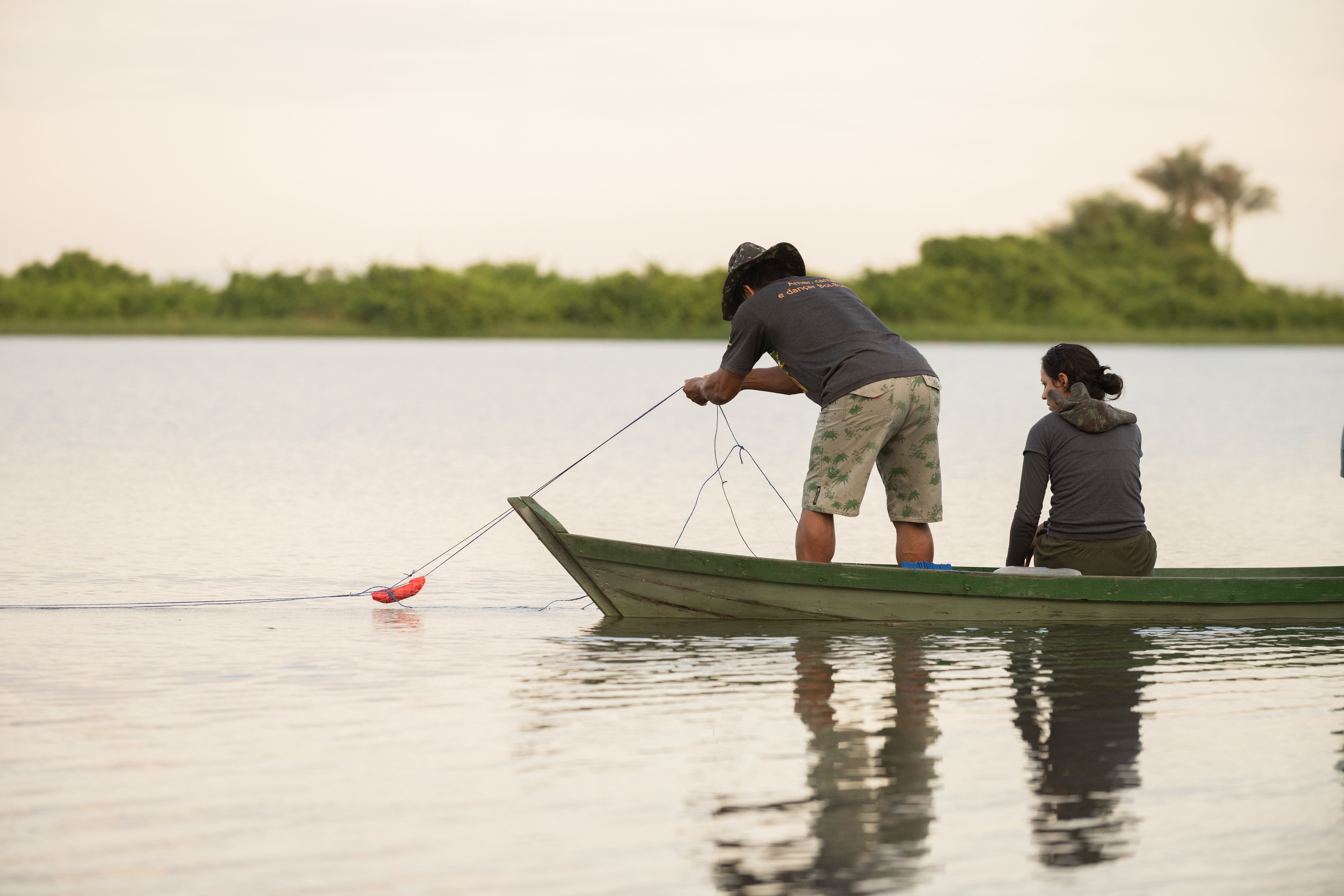Rezaul_UNDP.jpg?width=626&height=417&name=Ganges%20River%20Dolphin%20Bangladesh%20(c)Rezaul_UNDP.jpg)
River dolphins are extraordinary. As apex predators, they are the icons of some of the world’s greatest river systems.
But all six remaining species are facing extinction, highlighting the growing threats to their survival and also the health of their rivers, which sustain hundreds of millions of people and a wealth of wildlife across Asia and South America. But now there is a real sign of hope - thanks to the first ever Global Declaration for River Dolphins.
Since the 1980s, river dolphin populations have plummeted by 73% due to a barrage of threats, including entanglement in fishing nets, huge impact of hydropower dams, pollution from agriculture, industry and mining, and habitat loss.
The recent deaths of over 150 river dolphins in the Amazon’s drought-ravaged Lake Tefé shows that climate change is becoming an increasingly severe threat to their survival.
After decades of this seemingly irreversible decline in river dolphin numbers across the globe, all six surviving species - the Amazon, Indus, Ganges, Irrawaddy, Tucuxi and Yangtze finless porpoise - are now classified as Endangered or Critically Endangered. A seventh species, the Chinese river dolphin or baiji, was declared extinct in 2007.
Clearly, urgent action is needed which is why range states from Asia and South America are gathering in Colombia to sign the landmark Global Declaration for River Dolphins.
“This historic declaration creates a roadmap for the recovery of river dolphin populations across the globe - offering real hope for the survival of these iconic species despite the enormous threats they face,” said Stuart Orr, Global Freshwater Lead for WWF.
But it is not just about saving river dolphins. They are indicators of the health of some of the world’s most important rivers, including the Amazon and Orinoco in South America, and the Ayeyarwady, Ganges, Indus, Mekong, Mahakam and Yangtze in Asia.
These rivers support countless communities, from Indigenous Peoples and local communities in remote areas to the residents of megacities. The rivers also water vast amounts of agricultural land, fuel industry, and sustain a wealth of wildlife. Where freshwater dolphin populations are thriving, it is likely that the overall river systems are flourishing – as well as the communities, companies and countless other species that depend on them.
But river dolphins are not thriving. Most populations are still declining: a clear sign of the damage that we have done - and are still doing - to these rivers.
While the overall global picture is bleak, conservation efforts have proven successful in halting the decline of some river dolphin species, including in some of the most densely populated river basins in the world, such as the Indus and Yangtze.
In China, the numbers of critically endangered Yangtze finless porpoises - the only freshwater porpoise in the world - have increased by 23% over the past five years as a result of strict protection measures and conservation efforts. Despite this, there are still only 1,249 Yangtze finless porpoises.
Meanwhile, the population of endangered Indus river dolphins has almost doubled over the last 20 years due to collective action by government, communities and NGOs, including WWF. However, there are still only around 2,000 left in the Indus river basin.

Pingers save river dolphins and improve fishers' average catch
Traditional conservation is critical but so are innovative ideas, like WWF’s electronic pinger project. This has successfully prevented dolphins in Indonesia’s Mahakam river from dying after becoming accidentally entangled in gill nets, which had been the greatest direct threat to the last 80 dolphins in the river.
The project also resulted in a 40% increase in the average catch for local fishers and no expensive dolphin damage to their nets.
The South American River Dolphin Initiative has demonstrated the power of partnerships, by bringing organizations together to advance science, satellite tag river dolphins to discover more about their movement and behaviour, and raise awareness about the role of river dolphins - and the threats to their survival.
But these efforts are not enough on their own to safeguard the long term future of river dolphins. Which is why the Global Declaration for River Dolphins is so significant. For the first time, countries are committing to collective action to save river dolphins.
“Inspiring conservation efforts at local and national levels have yielded some incredible results, but progress is limited and the threats remain vast. This is why the Declaration is vital: we need collective global efforts to ensure the long term survival of all six river dolphin species,” said Daphne Willems, WWF Lead River Dolphin Rivers initiative.
“And not just their survival because thriving river dolphin populations indicate healthy rivers - and those are the foundation for thriving communities. The Declaration is a clear commitment from these range states to a brighter future for river dolphins, rivers and people. Together we can drive real progress and show that a nature-positive, resilient and sustainable future is possible.”
WWF is committed to protecting and restoring our rivers, lakes and wetlands because healthy freshwater ecosystems underpin our societies and economies as well as sustaining life on land and in the water. We’ve worked with partners across the world to halt the degradation of freshwater ecosystems, reconnect rivers and restore wetlands, safeguard iconic species, drive corporate water stewardship, and transform the way people value our freshwater life support systems.
Find out more: panda.org/freshwater

